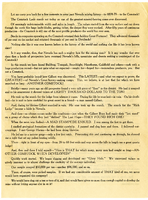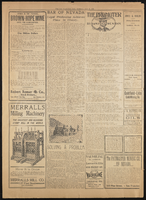Search the Special Collections and Archives Portal
Search Results
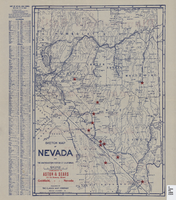
Sketch map of Nevada and the southeastern portion of California, 1906
Date
Description
Image
Sherwin "Scoop" Garside Papers
Identifier
Abstract
The Sherwin "Scoop" Garside Papers comprise photographs and documents of Las Vegas Review-Journal writer and photographer Scoop Garside. The collection dates from 1930 to 1983 and includes publicity photos of the Old Spanish Trail, correspondence from the Nevada State Centennial Commission, history of mines (Tonopah, Goldfield, Bullfrog), copies of articles written by Garside, family photos and general photographs of people and places, negatives of Las Vegas, Nevada; Searchlight, Nevada; St. George, Utah; and several unlabeled negatives. The 2017 addition contains newspaper clippings, a scrapbook, Nevada Historical Quarterly, and information on Nevada historic preservation. There is also genealogical information on the Garside family.
Archival Collection
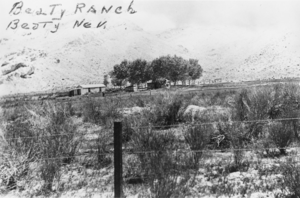
View of Beatty Ranch located on the northeast side of Beatty: photographic print
Date
Archival Collection
Description
From the Nye County, Nevada Photograph Collection (PH-00221) -- Series III. Beatty, Nevada -- Subseries III.E. Lemmon Family. M.M. Beatty, for whom the town is named, occupied the ranch at the time of the Bullfrog discoveries by Shorty Harris and Ed Cross.
Image
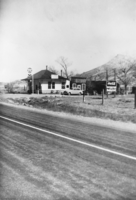
Hot springs located a few miles north of Beatty, Nevada: photographic print
Date
Archival Collection
Description
From the Nye County, Nevada Photograph Collection (PH-00221) -- Series III. Beatty, Nevada -- Subseries III.F. Palsgrove Family. At one time the hot springs was a stop on the Bullfrog Goldfield Railroad, which linked Rhyolite and Goldfield. The building pictured is the old station house for the railroad.
Image
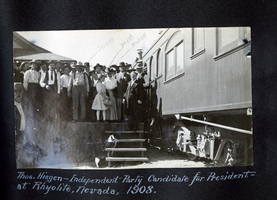
Photograph of Thomas Hisgen and a crowd on the train platform, Rhyolite (Nev.), 1908
Date
Archival Collection
Description
Caption: Thomas Hisgen - Independent Party Candidate for President - at Rhyolite, Nevada, 1908
Image
Aerial photograph looking southwest towards Halls Crossing Marina on Lake Powell in Utah: digital photograph, 2022 April 30
Level of Description
Archival Collection
Pagination
- Previous page ‹‹
- Page 15
Archival Component
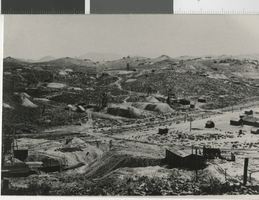
Photograph of Goldfield Mining District in Goldfield (Nev.), 1907
Date
Archival Collection
Description
Image

